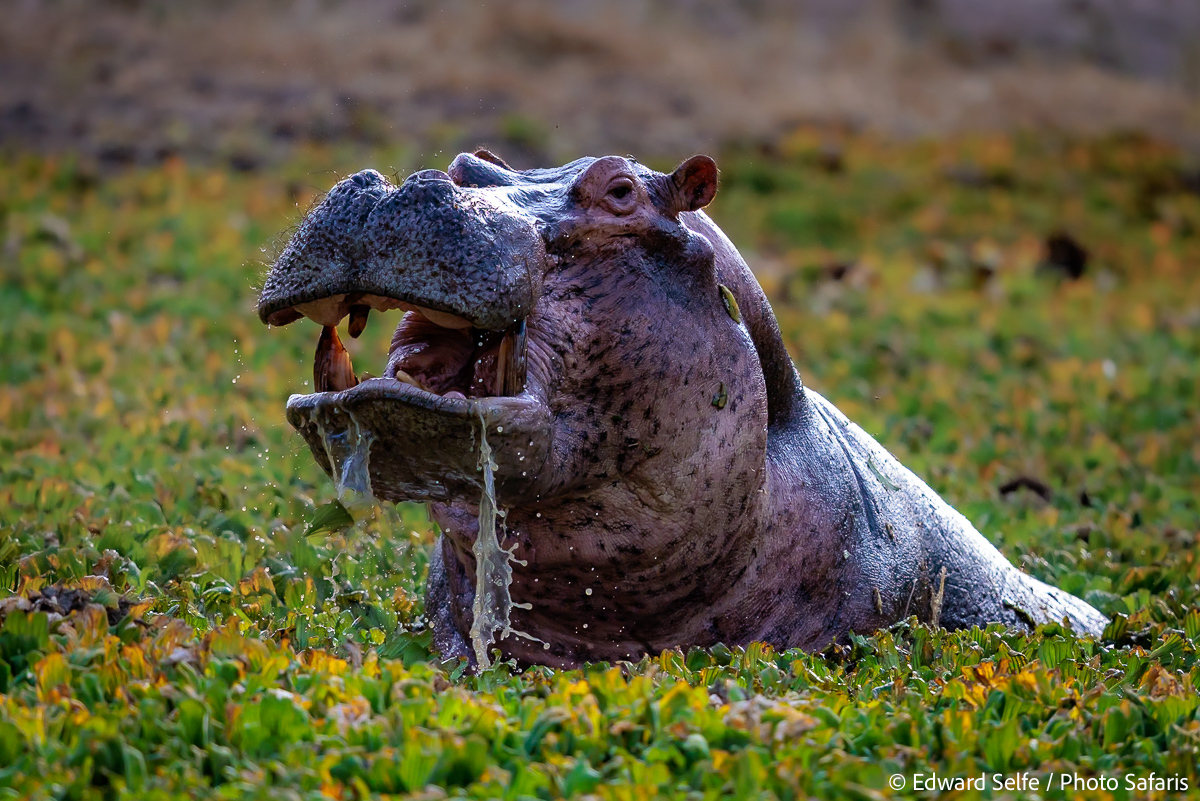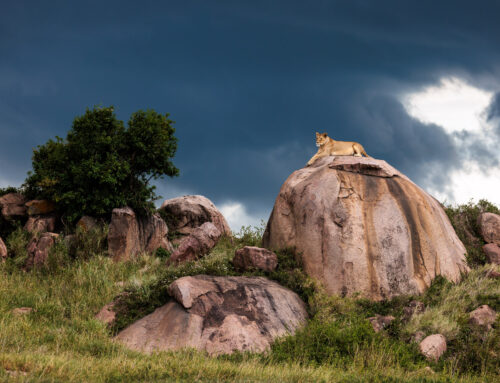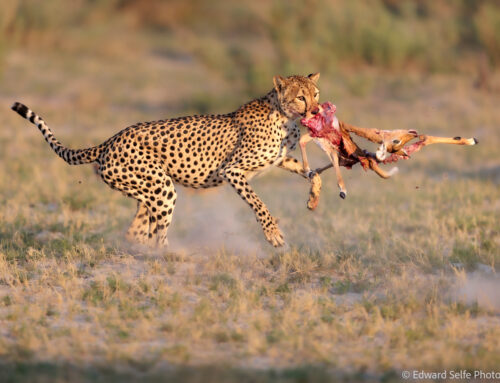The South Luangwa looks spectacular in the rainy season; green, rich and so beautiful. There is new life everywhere and everyone is recharging energy and fat supplies after the long dry season. The only problem from our point of view is access; the park becomes very wet and many areas are beyond reach of a vehicle due to the mud and the flooding rivers and streams.
My Emerald Season safaris aim to give visitors an opportunity to see the riches of this season, but at a time when the water levels have dropped and access is improving. We were fortunate this year that the rains were less severe than previous years and the park was already drying out fast for my Emerald Season tours in April and May. We had all the benefits of the green vegetation but without the potential hazards of deep mud, flooded roads and scattered wildlife. On the reverse of this, a dry rainy season spells trouble for the park later in the year, when there will be very dry conditions and a nutritional squeeze in advance of the arrival of the rains in November.
I welcomed a mixed group of repeats and new guests; it was great to welcome back Dr Tom and John as well as meet Jeremy and Gavin for the first time. As usual, below is a caption-based record of the tour. Thank you for reading and I hope you enjoy!
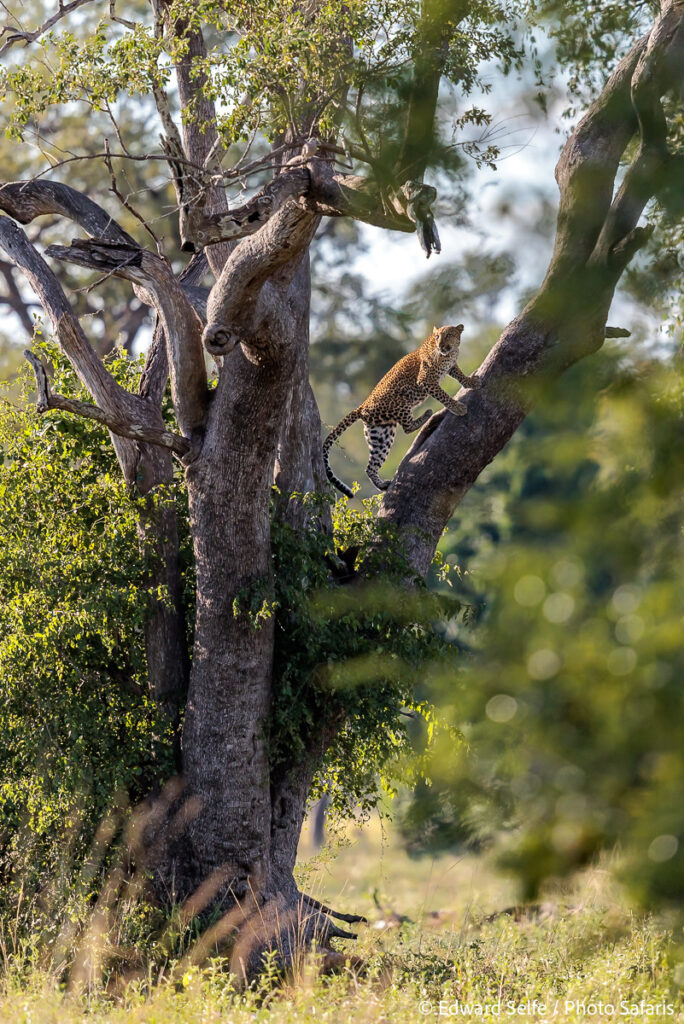
This tour started with a bang – our first afternoon gave us our best leopard sighting of the trip. We spotted her at the base of a tree, which she then climbed and jumped between the branches. You can see some of the rest of the images from this afternoon on a blog about leopards climbing trees.
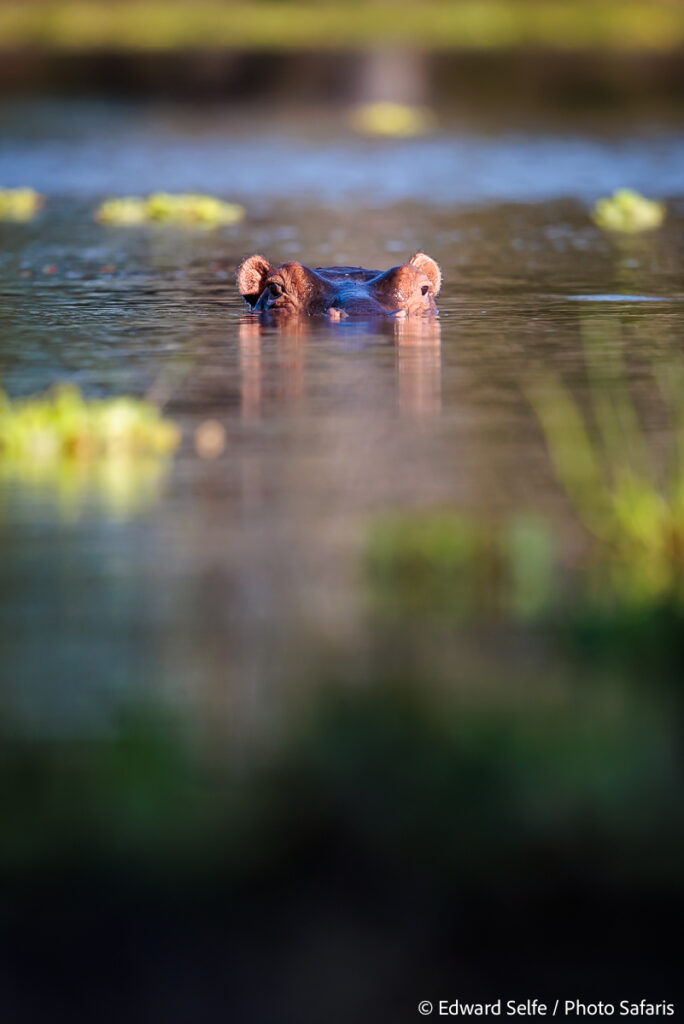
The group was happy to find a good location and then spend extended periods sitting and watching for action. This was one such place on our first morning; while we sat at the edge of the lagoon, the hippos lolled in the water and occasionally splashed, skirmished and blew plumes of spray. I missed much of the action as I was assisting with camera settings and getting to know each person’s skills at this early stage of the trip.
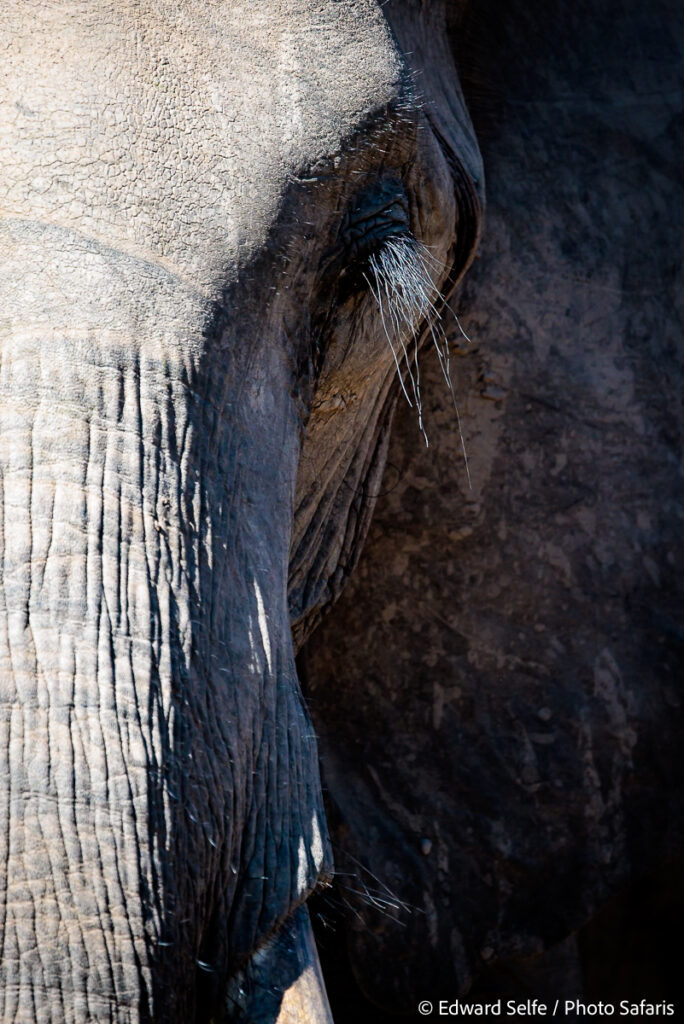
Late morning on the first day, and an elephant close up. This herd walked close by the vehicle on the way from taking a drink from a small lagoon.
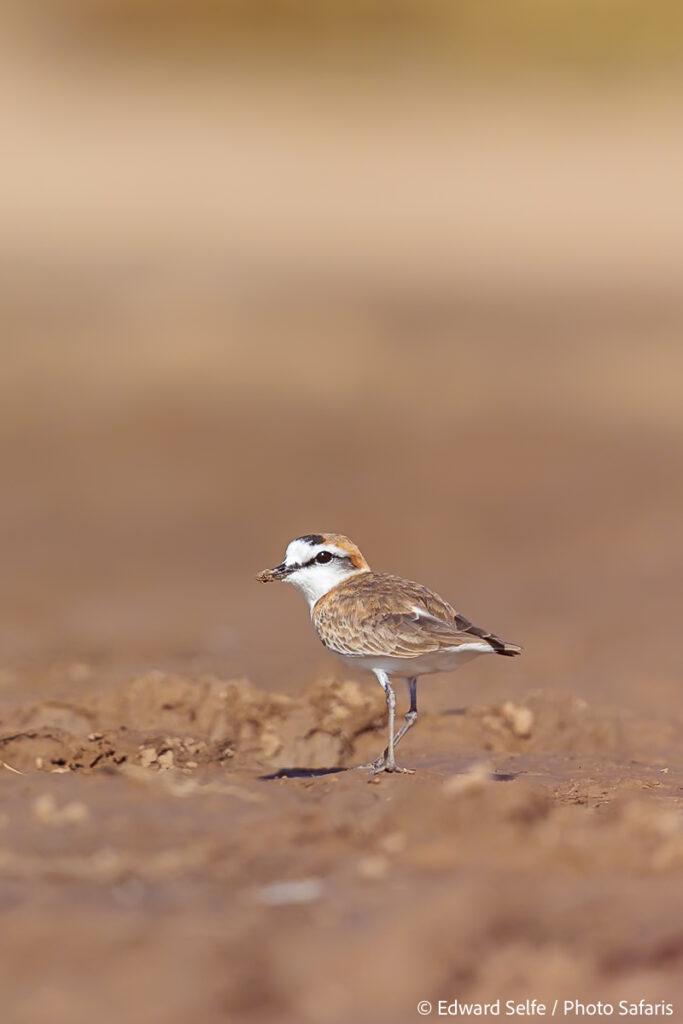
We were crossing the Luangwa river by boat at the start and end of each drive. Rather than simply crossing straight over, on some of the days, we took time to cruise along the sand bars looking for birds and reptiles at the water’s edge. It’s rare to be able to photograph White-fronted Plovers as close as this because they always live far away on the sand bars in the middle of the river – the boat was a bonus in this respect!
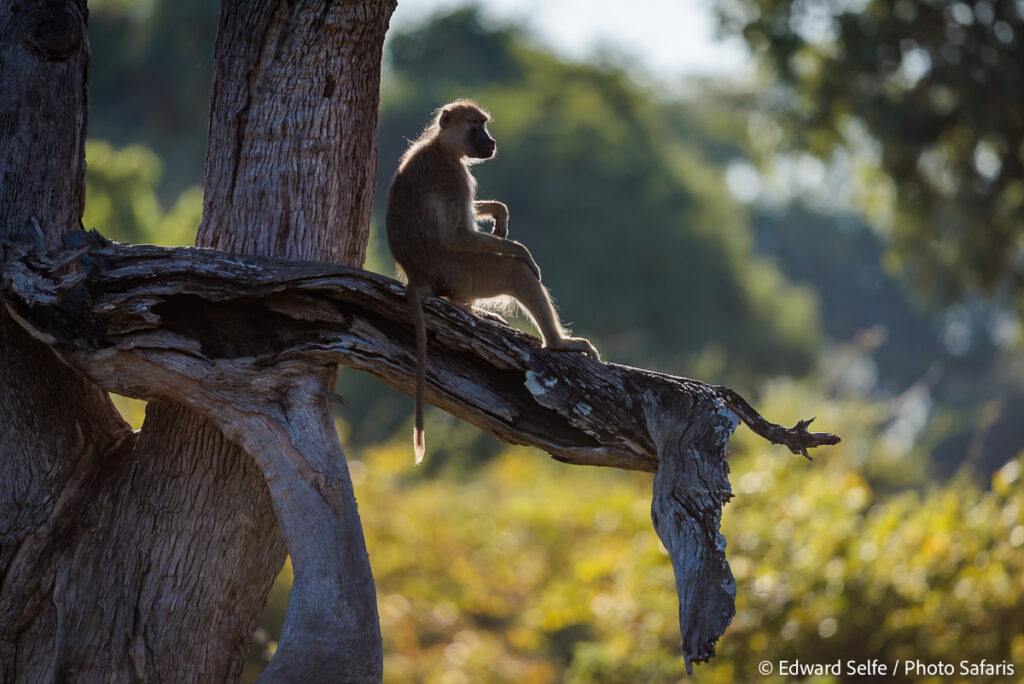
With experienced photographers, I always try to push new techniques, including working hard to create good backlight situations. Baboons make great subjects since they are fluffy but the background must be dark to allow their halo-lit fur to show up as well as this.
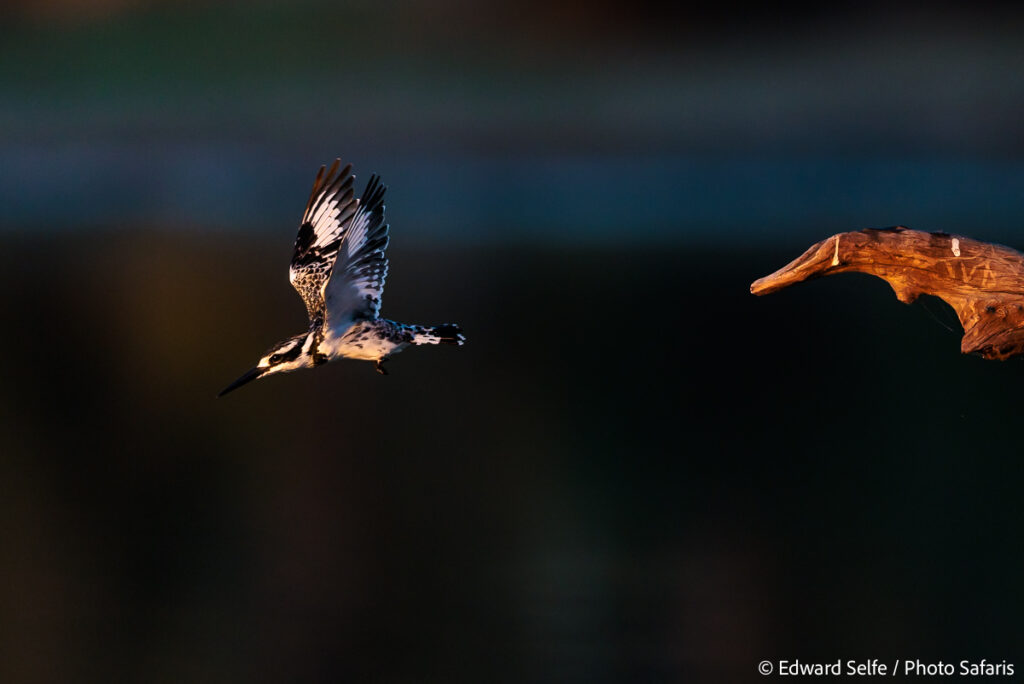
Similarly to the baboon image above, the strong differential light hitting this bird, but not hitting the bank behind, makes the image far more interesting than if the whole scene was evenly lit. Heavy under-exposure will be required to make an image like this appear as it should – I selected -2.
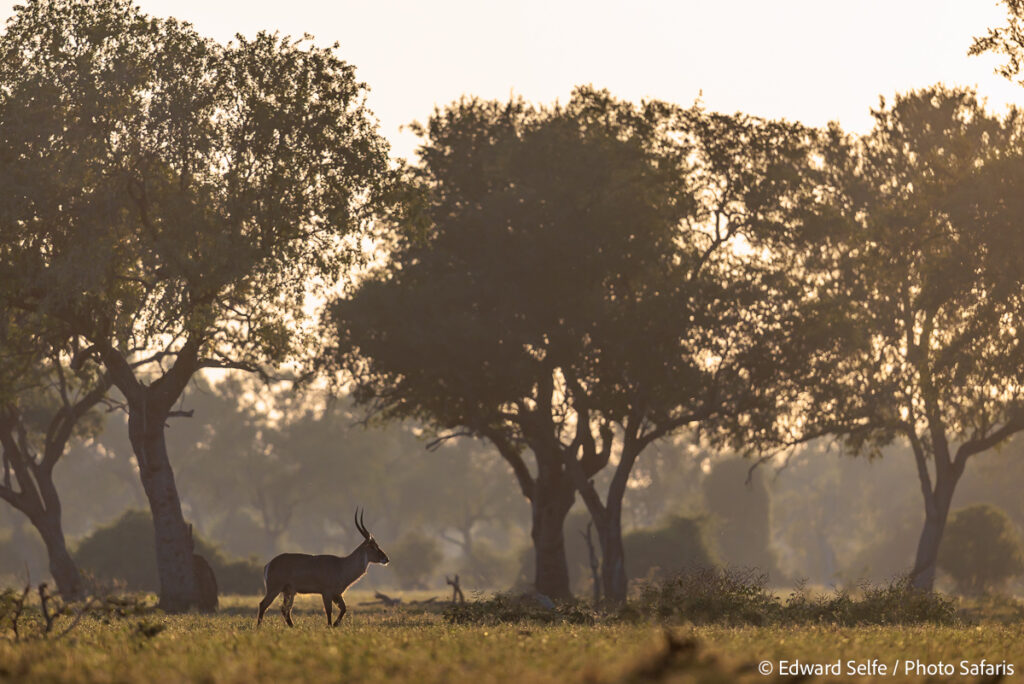
Animalscapes are another technique that I love to work with on safaris – shooting a landscape shot with a long lens and an animal placed correctly in the frame makes a strong impact.
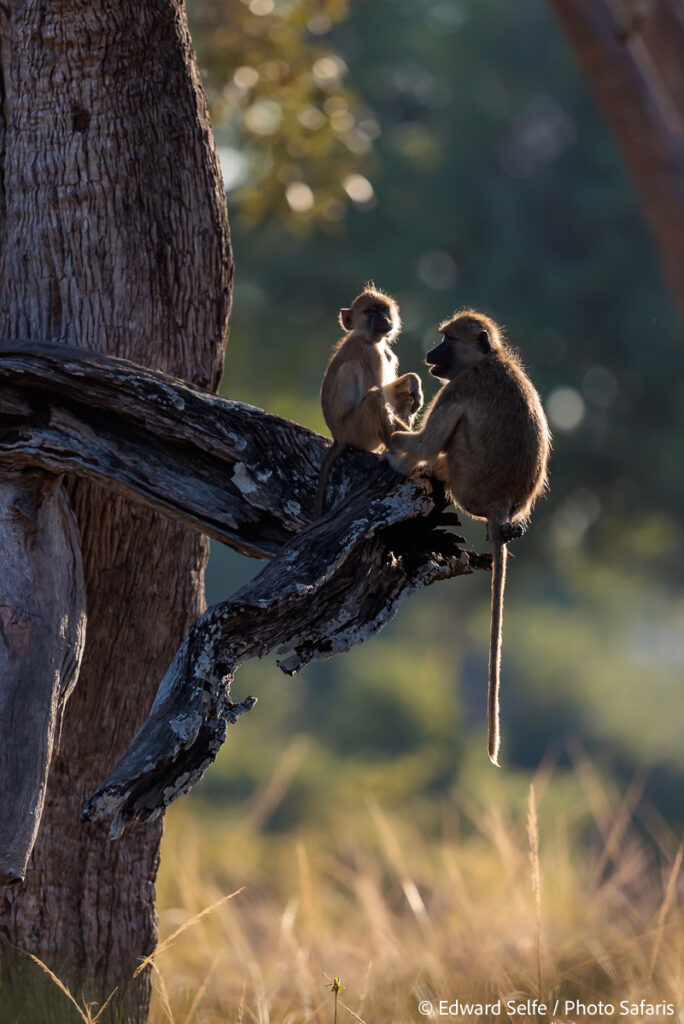
More backlit baboons with slightly less strong light this time…
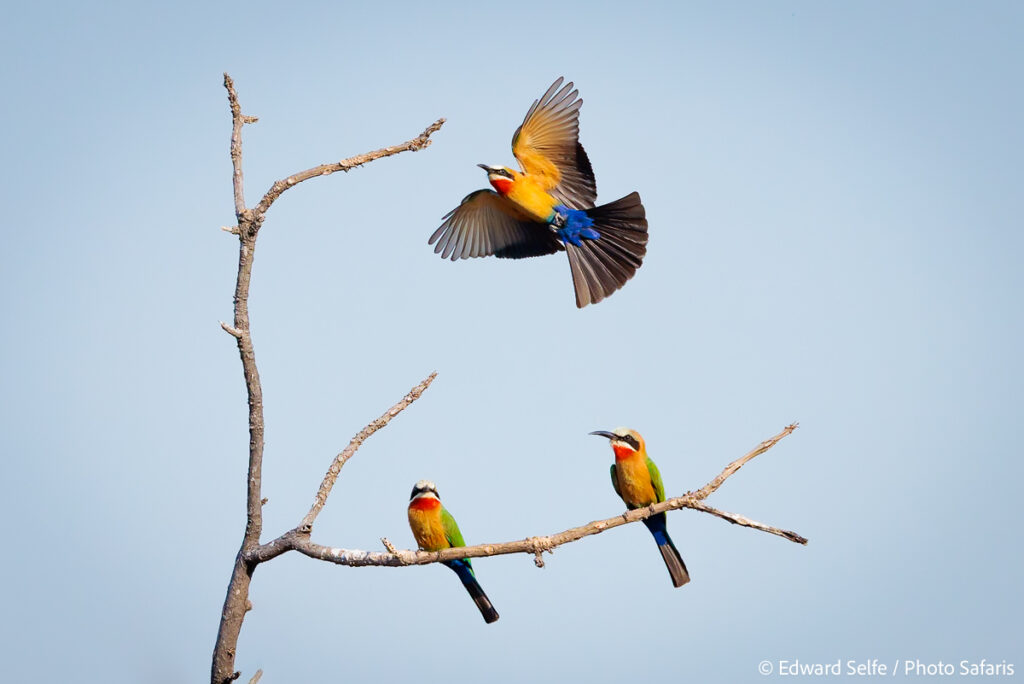
Shooting white-fronted bee-eaters at the river bank is always fun, and a good way to fill the camera’s memory card. I waited for a moment when there was a bird in flight crossing between the two perched birds to add interest to the image.
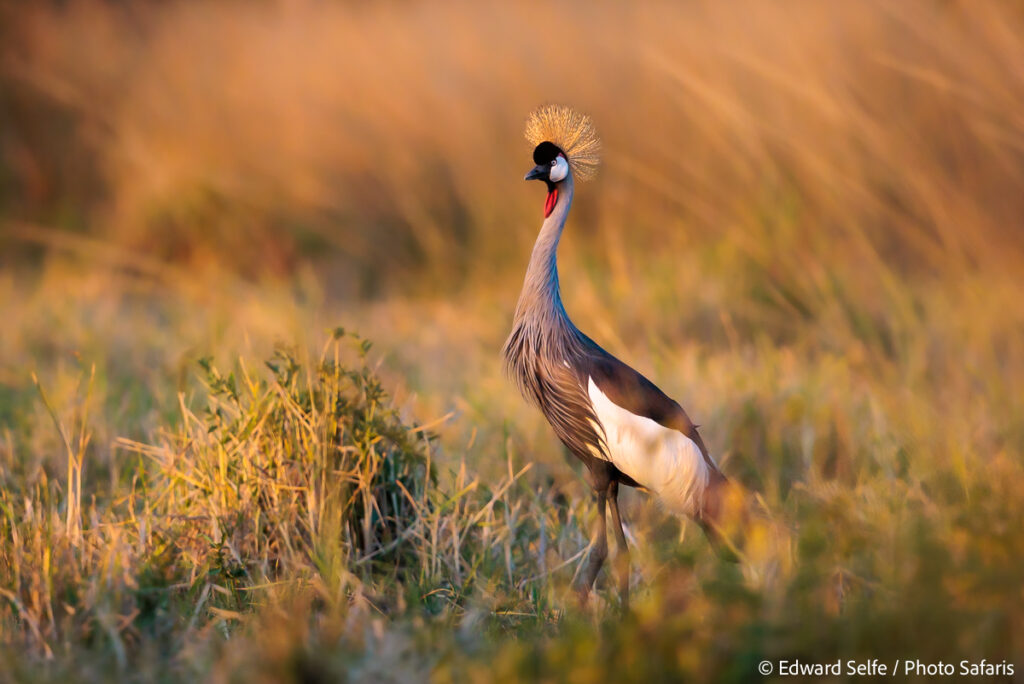
Approaching slowly and taking our time allowed us close ups with these timid cranes. When it’s safe to do so, and it won’t disturb the sighting, I allow my guests to get off the vehicle and sit on the ground – it makes all the difference to the angle of view.
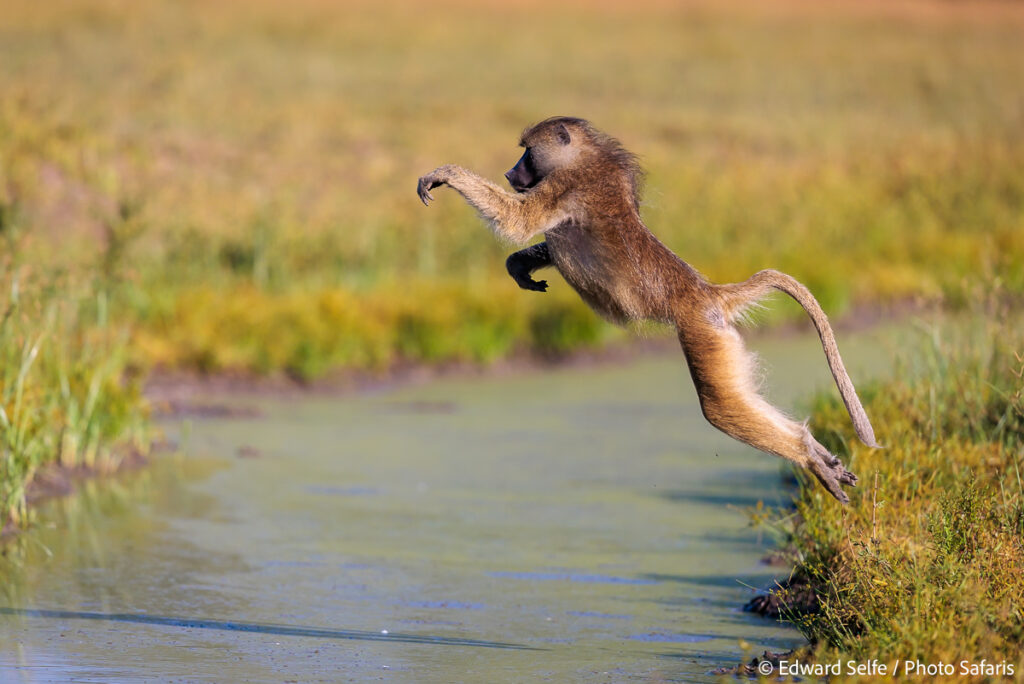
Sometimes it’s a good idea to sit in one spot and wait. In this case, we chose to wait in a gulley where we were ground level with lots of impala, baboons and zebra around. The male baboons were (predictably) fighting, giving us action shots when they chased each other across the channels.
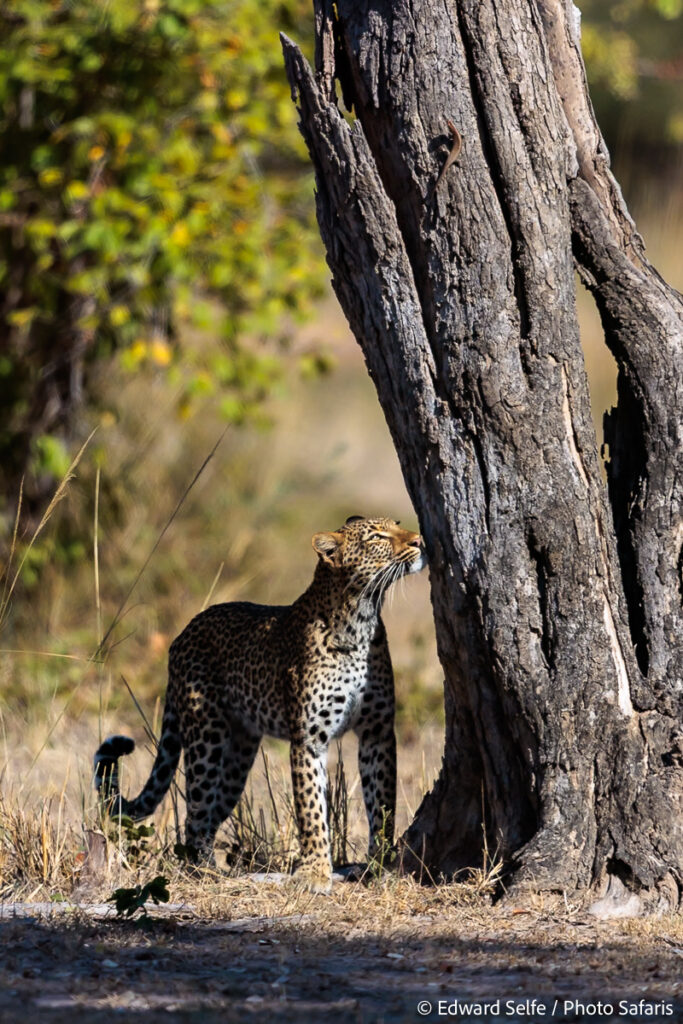
One morning, I chose a route through a swamp that wasn’t as dry as I had hoped…we got stuck down to the axles. Luckily another vehicle was nearby and pulled us out without too much hassle, but we flushed a leopard in the process! She was not thrilled to see a number of people on foot so was a little rattled, but she settled and gave us a wonderful sighting of her investigating the scent marks of other leopard(s) on this tree. She is a youngster — the daughter of one of the well-known leopards from that area.
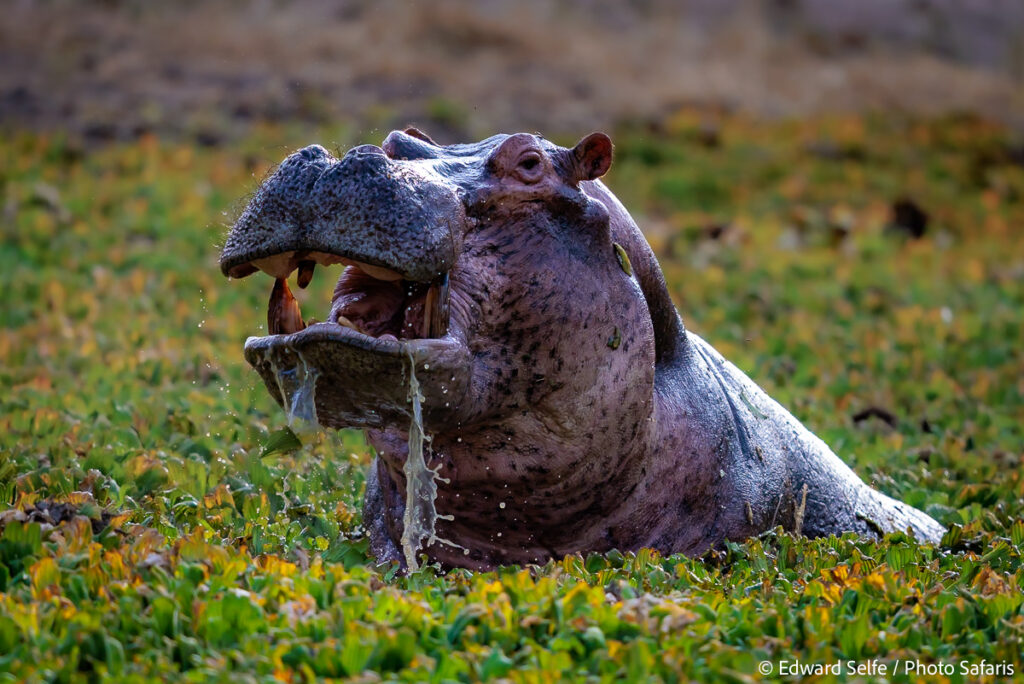
We hadn’t spent much time with hippos, and they are such an icon of the bush. I tried one lagoon and found only an old male who didn’t even move when we approached. Trying another lagoon, we found a very feisty male who showed off from the moment we arrived. He thrashed, rolled, flailed and chomped water between his jaws all as a warning that we should move on. I checked that we had an exit route and stopped the engine. I told the guests that we would stay for a short time as our presence was clearly stressing him, but that I was willing to wait for a few minutes as we were not in his space and his response was disproportionate to our proximity. It yielded some great images!
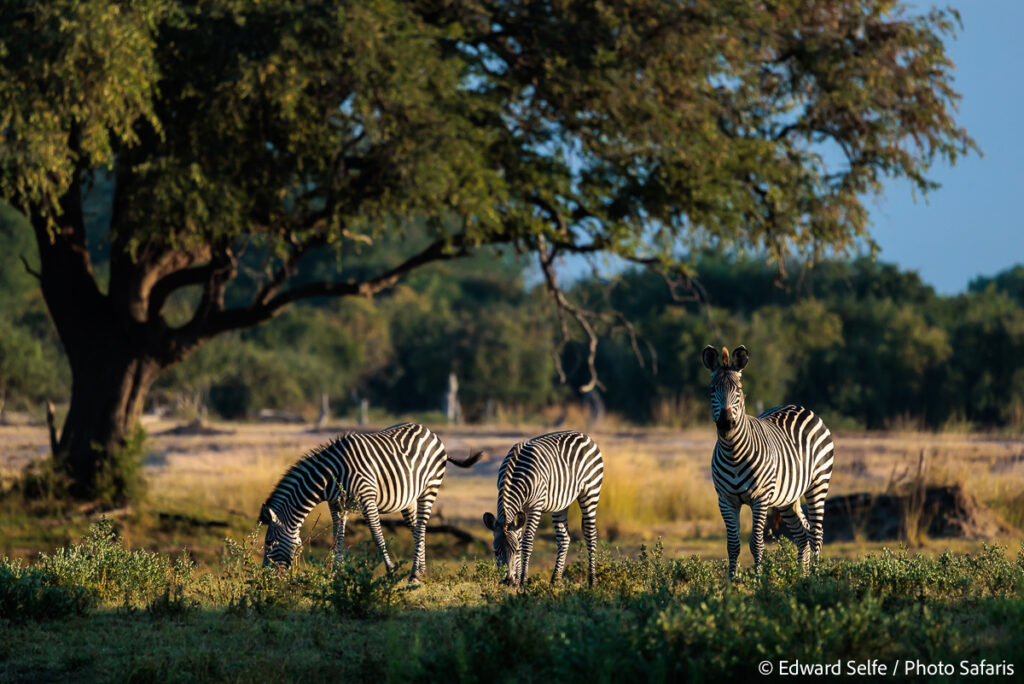
Some of my favourite images of the trip came from this shoot in the early morning at Lupunga. The strong side light, the low angle and the perfect background combine to make something very pleasing.
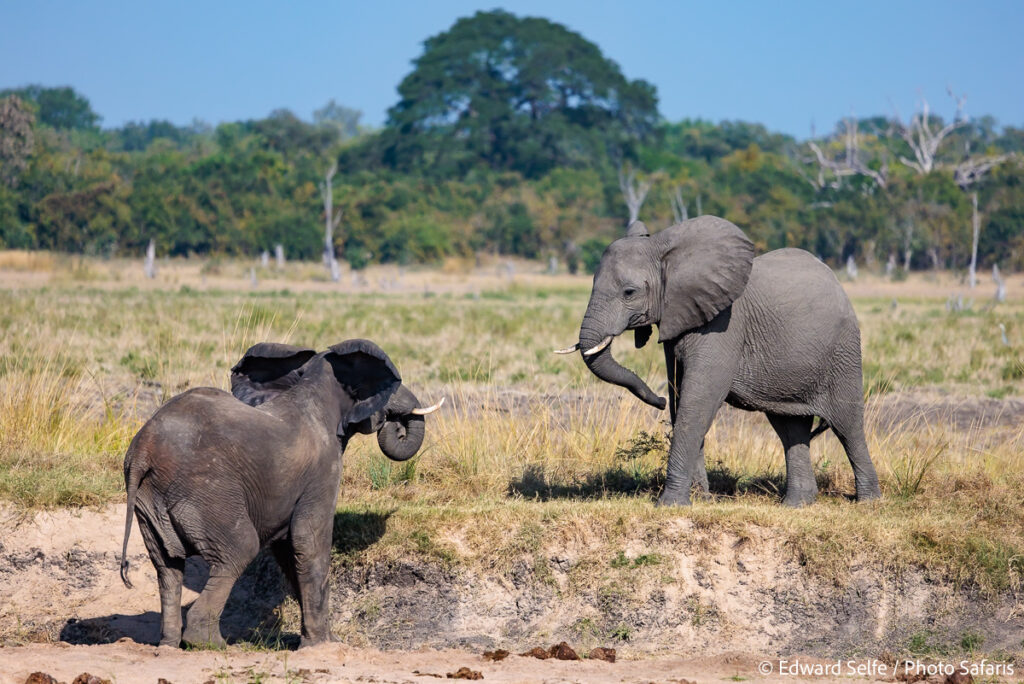
Tea break at a spot in the river where the elephants dig for water — and lots of the usual interactions that come with the meeting of herds!
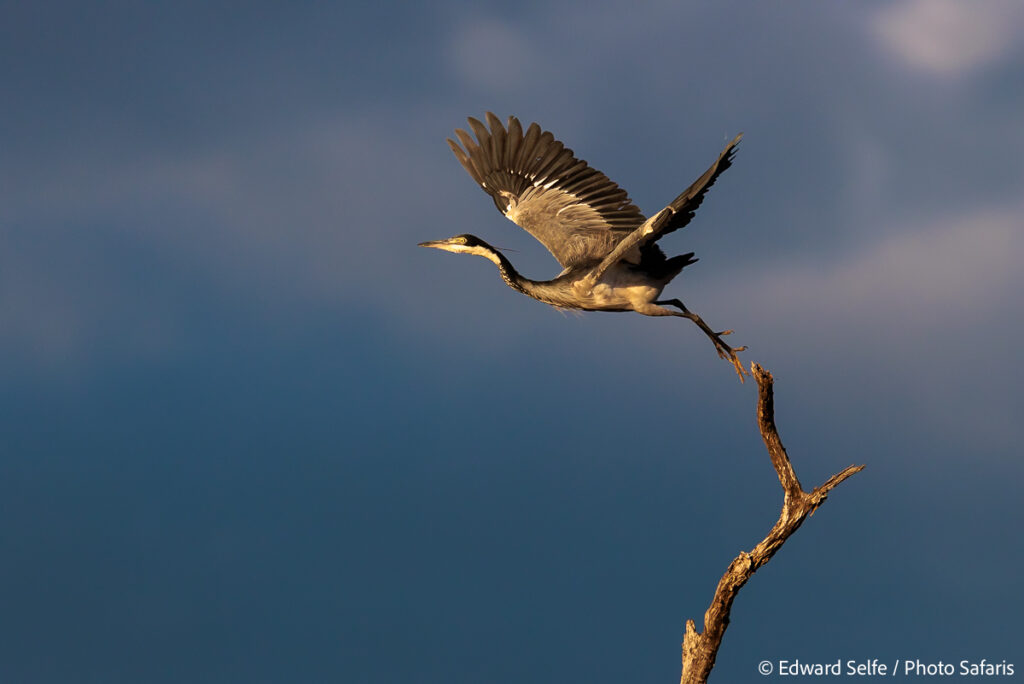
Superb evening light, with a dark stormy skies, make a great setting for the lift-off of this Black-headed Heron.
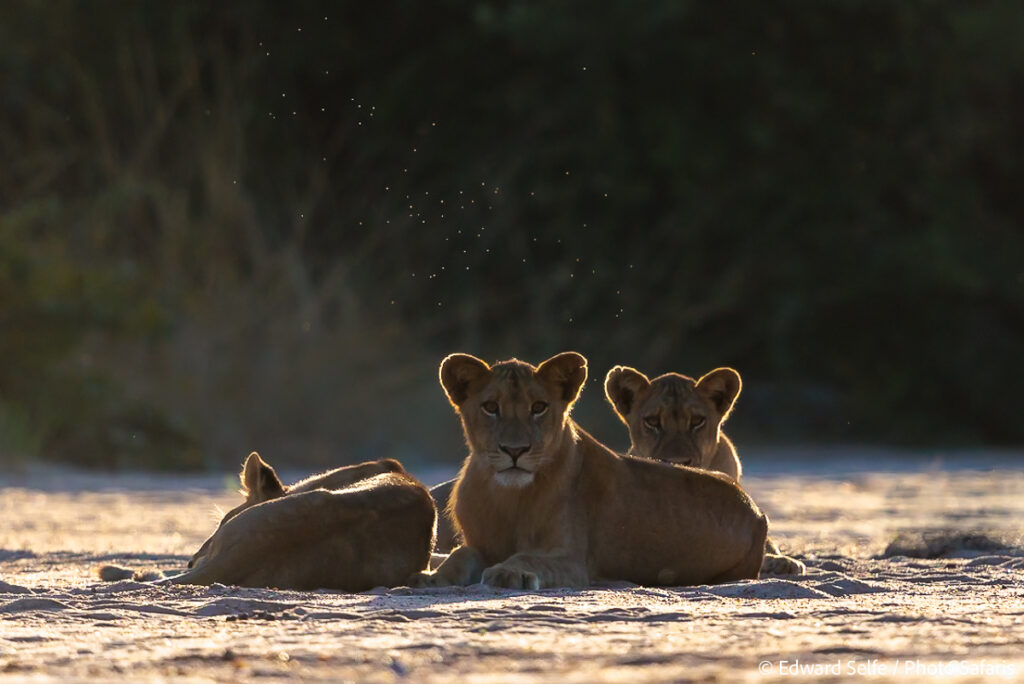
We waited a long time for this image. We found the lions in the river bed early in the morning and I knew that when the light hit them, it would create a superb effect. If the lions would lift their heads at the same time, as they did here, it would give a special moment. After getting these shots, we drove around and placed the sun coming in from behind us — the effect was lost and it was interesting to see how uninterested we all were in the standard shots of lions in the sand after we had managed to create something rewarding like this.
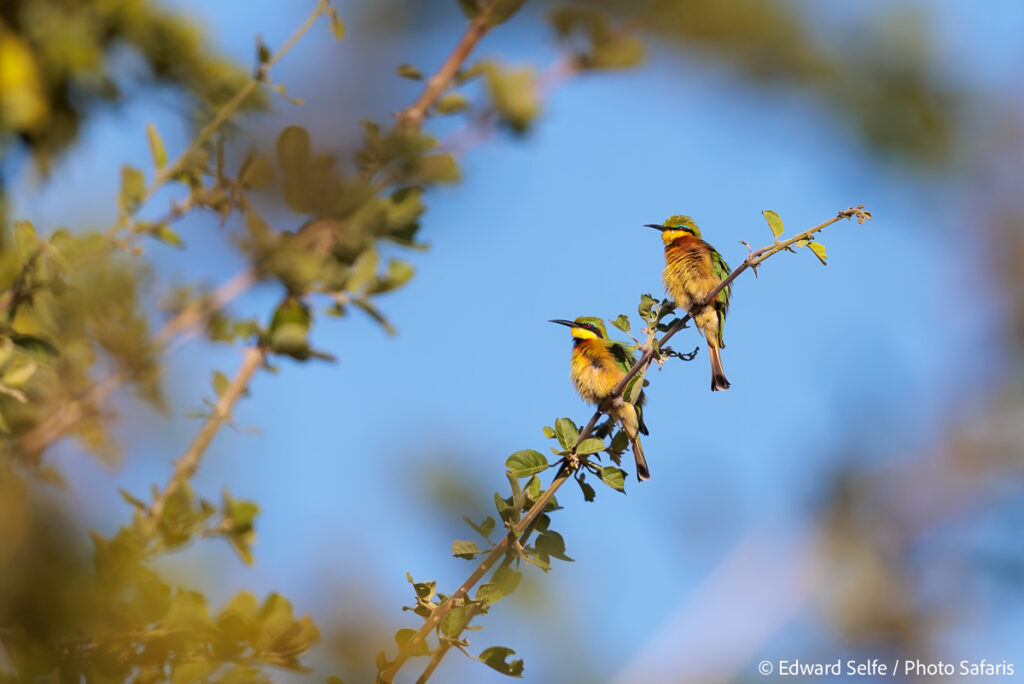
Our last sighting of the trip – a pair of Little Bee-eaters placed among the creeping Combretum branches. Background and setting are everything.
Thank you for reading to the end. I have spaces on my Emerald Season South Luangwa tours (and also on my Emerald Season Lower Zambezi tours) for 2025 and 2026. Please visit my Safaris Page to find out more.

